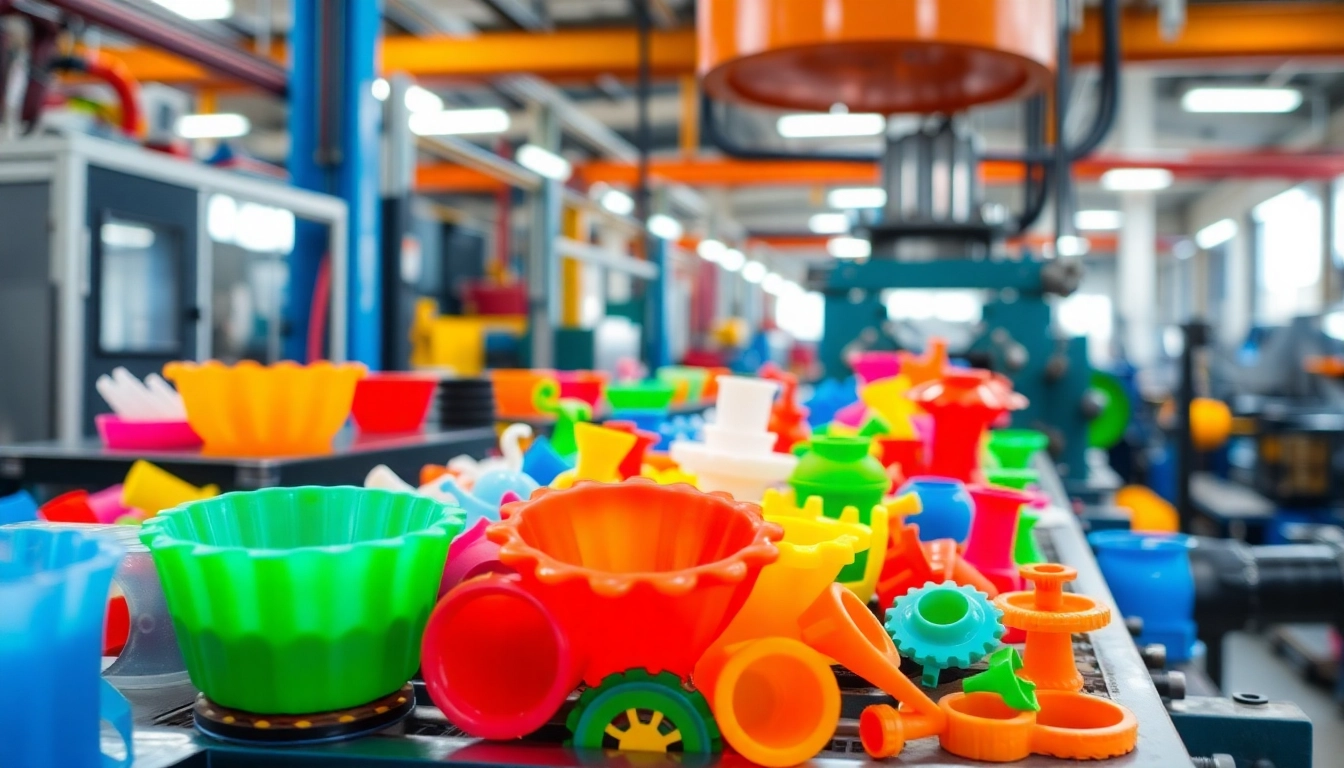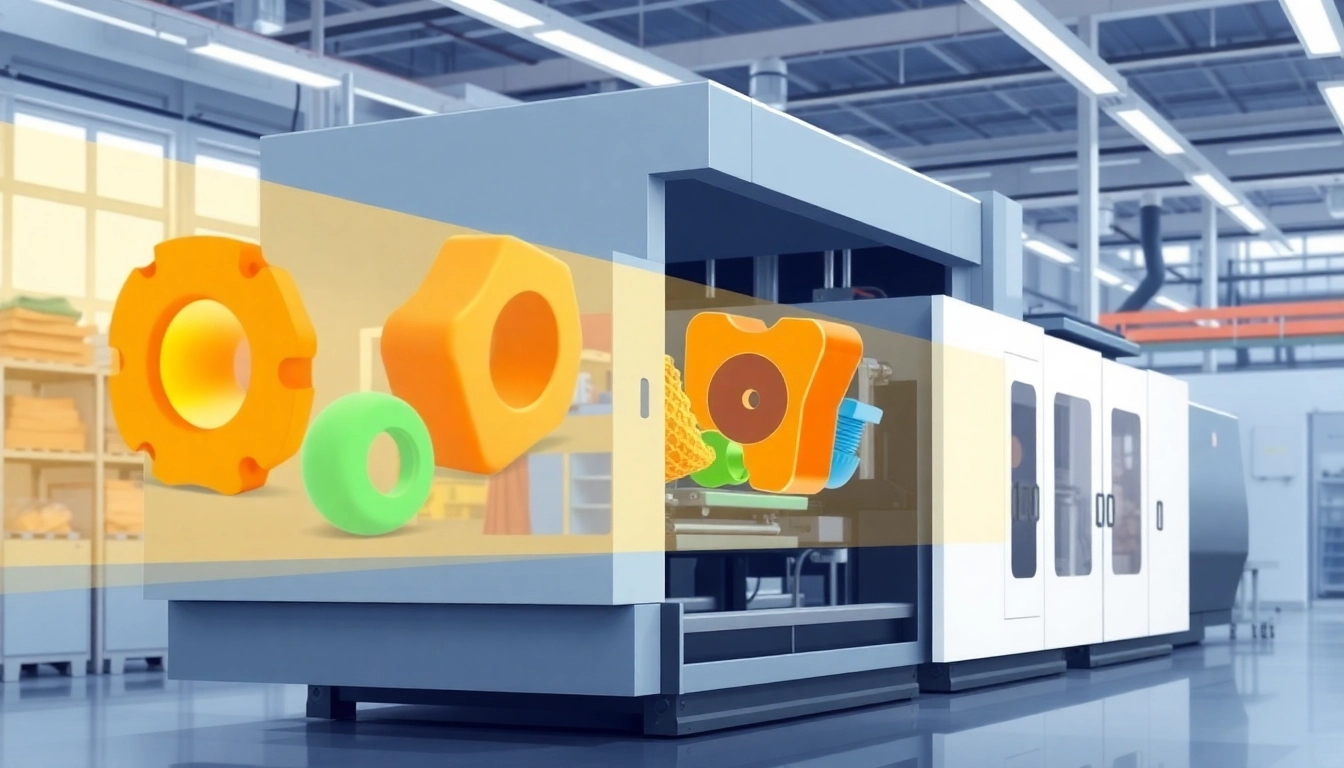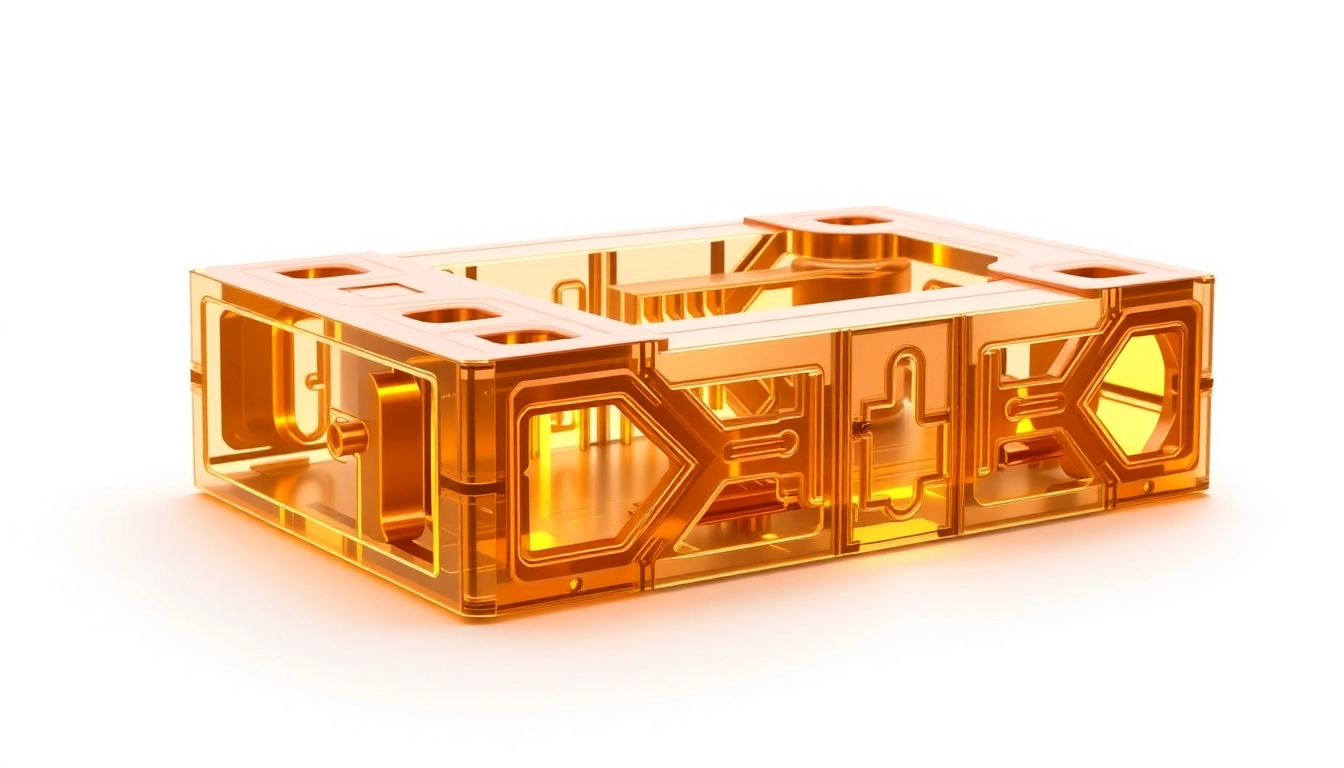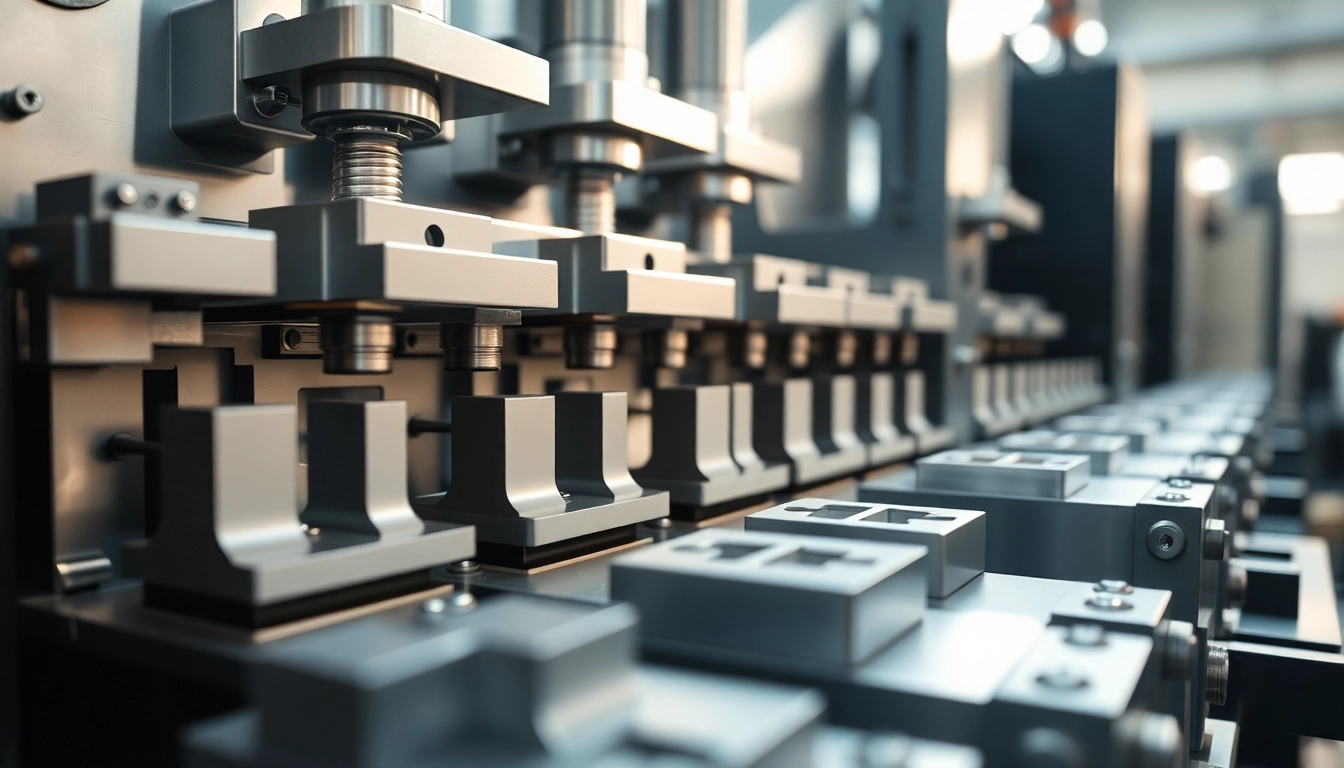Understanding Blow Moulded Plastic Parts
What are Blow Moulded Plastic Parts?
Blow moulded plastic parts are hollow components created through a manufacturing process known as blow molding. This process utilizes air pressure to form plastic into the desired shape. The resultant parts have a wide variety of applications across numerous industries, thanks to their unique attributes, which include lightweight, durability, and cost-effectiveness. The process begins with a plastic tube known as a ‘parison,’ which is heated until it becomes pliable, after which air is introduced to inflate it into a mold, shaping it into a defined form.
Key Advantages of Blow Moulding
The blow moulded plastic parts come with several key advantages that enhance their appeal for manufacturers and businesses alike:
- Efficiency and Speed: The blow molding process is notably efficient, allowing for high-volume production with shorter cycle times compared to other methods like injection molding.
- Cost-Effectiveness: Blow molding reduces the costs associated with labor and materials, providing an economical solution for producing hollow plastic parts.
- Design Flexibility: The technology allows for intricate designs and complex shapes that can be tailored to specific requirements, enabling customization for various applications.
- Material Utilization: Blow molding techniques are highly efficient in material usage, minimizing waste while maximizing the integrity and strength of the final product.
Common Use Cases and Industries
Blow molded parts are prevalent in diverse sectors due to their versatile nature. Here are some common applications:
- Packaging: From water bottles to industrial containers, blow molded products are extensively used in packaging due to their lightweight and durable properties.
- Consumer Goods: Household items, toys, and personal care products often utilize blow molded components for their ergonomic shapes and functionality.
- Aerospace and Automotive: Parts such as fuel tanks, air ducts, and various hollow components benefit from the lighter weight and strength provided by blow molding.
- Industrial Applications: Equipment housings and machinery components often rely on blow moulding for robust yet lightweight solutions.
The Blow Moulding Process Explained
Step-by-Step: How Blow Moulding Works
The blow moulding process involves a series of precise steps to transform raw plastic into lightweight, hollow parts:
- Preparation of the Parison: The initial phase involves extruding or injecting a thermoplastic material into a tube-shaped structure called a parison.
- Heating: The parison is then heated to a temperature where it becomes pliable, making it ready for shaping.
- Moulding: The heated parison is placed in a mould cavity, and air is blasted into it, inflating the softened plastic until it takes the form of the mould.
- Cooling: After the plastic has conformed to the mold, it is cooled to solidify the shape.
- Finishing: Finally, the part is ejected from the mould and undergoes any necessary finishing processes, such as trimming edges or adding colors.
Types of Blow Moulding Techniques
There are three main types of blow molding techniques that cater to different manufacturing needs:
- Extrusion Blow Molding (EBM): This method involves extruding the parison before the blowing process. It is commonly used for producing large containers and hollow parts.
- Injection Blow Molding (IBM): In this process, the preform is first injected into a mold, then transferred to a blow mold where it is inflated. IBM provides excellent detail and precision for smaller parts.
- Injection Stretch Blow Molding (ISBM): This technique combines injection molding with stretch blow molding, allowing for thinner and stronger products. It is often used for manufacturing bottles.
Materials Used in Blow Moulding
A variety of materials can be used in blow molding processes, each with its benefits and specific applications:
- Polyethylene (PE): Commonly used for a wide range of containers due to its flexibility and toughness.
- Polypropylene (PP): Ideal for applications requiring higher resistance to chemical exposure.
- Polyethylene Terephthalate (PET): Frequently used in beverage containers, cherished for its clarity, strength, and recyclability.
- Polyvinyl Chloride (PVC): Suitable for a range of industrial applications due to its rigidity and toughness.
Applications of Blow Moulded Plastic Parts
Consumer Products and Packaging
Blow molded plastic parts are widely utilized in the consumer goods sector, particularly for packaging solutions. Everyday items, such as bottles, jars, and containers, benefit from the lightweight yet strong characteristics of blow molded plastics. The versatility of blow molding also allows for creative branding opportunities through the use of vibrant colors and distinctive shapes, enhancing product appeal for consumers.
Industrial Solutions and Components
Industries requiring reliable component solutions often turn to blow molded products for their unique properties. Applications can be found in sectors such as automotive, aerospace, and appliance manufacturing. For instance, automotive manufacturers utilize blow molded fuel tanks and air ducts to minimize vehicle weight whilst ensuring safety and compliance with environmental regulations.
Innovations in Blow Moulding Applications
The blow molding industry is constantly evolving, with innovations addressing modern challenges. New techniques are being developed that improve the precision of parts produced while reducing waste. Additionally, advances in material science have resulted in the creation of biodegradable and recycled plastics, allowing manufacturers to minimize environmental impact. Technologies that integrate advanced sensors in the blow molding process are also emerging, enabling better quality control and optimized production.
Choosing the Right Blow Moulded Parts for Your Project
Factors to Consider in Material Selection
When selecting materials for blow molded parts, several factors should be evaluated to ensure the best outcome for your project:
- Strength and Durability: Consider the operational environment of the final product to select materials capable of withstanding external stressors.
- Weight: Lightweight materials are advantageous in many applications; ensure that the selected material aligns with this requirement.
- Cost: Analyze the budget available for production and select materials that provide the best cost-benefit ratio.
Customization Options for Blow Moulded Products
Customization plays a critical role in the blow molding process, as manufacturers can modify the design, size, and shape of parts to meet specific client needs. Surface finishes, colors, and structural reinforcements can all be tailored, allowing companies to design products that not only function well but also resonate with their target audience.
Finding Reliable Suppliers for Blow Moulded Parts
Identifying a trustworthy supplier is crucial to successfully incorporating blow molded parts into your operations. Key considerations include:
- Industry Reputation: Research potential suppliers for reviews and feedback from other clients to gauge their reliability and performance.
- Quality Standards: Ensure that the supplier abides by relevant quality standards and certifications.
- Lead Times: Confirm that their production timelines align with your project schedules to avoid potential delays.
Future Trends in Blow Moulding Technology
Emerging Technologies in Blow Moulding
The blow moulding sector is witnessing various technological advancements that promise to enhance production efficiency and product quality. Some notable trends include:
- Automation and Smart Manufacturing: The adoption of robotics and AI in the manufacturing process improves precision and reduces labor costs.
- Additive Manufacturing Integration: Combining additive techniques with traditional blow molding can streamline production and allow for complex designs that were previously challenging to achieve.
Sustainability Trends in Blow Moulded Plastics
As global awareness of sustainability issues increases, the blow molding industry is also adapting. Companies are innovating by sourcing biodegradable materials and implementing recycling programs. The shift towards sustainable practices not only meets regulatory requirements but also appeals to increasingly environmentally conscious consumers.
Market Insights and Predictions
The blow molded plastic parts market is set to witness robust growth in the coming years. Analysts predict that the demand in both consumer sectors and industrial applications will continue to rise, driven by the need for lightweight, durable, and affordable solutions. As businesses strive for more sustainable practices, blow moulding technologies are expected to evolve, focusing on efficiency and environmental stewardship.



